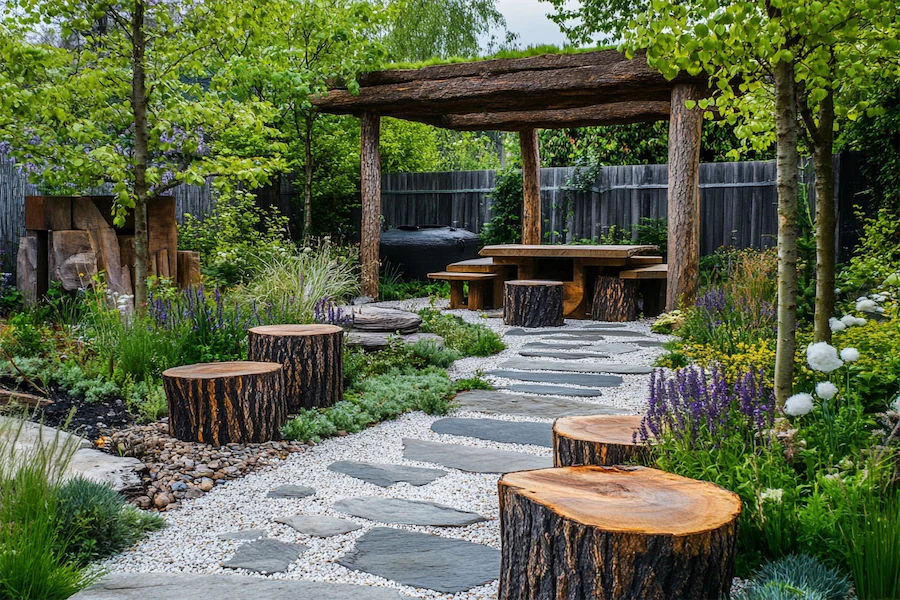A rustic garden embraces the beauty of natural materials and a harmonious blend of plants, creating a warm and inviting outdoor space that feels timeless and connected to its surroundings.
History and Origins of Rustic Gardens
The rustic garden style draws inspiration from traditional cottage gardens, which originated in England during the 19th century. These gardens were characterized by their informal layouts, dense plantings, and the use of locally sourced materials. They served both aesthetic and practical purposes, often combining ornamental flowers with herbs and vegetables. The emphasis was on creating a functional yet charming space that blended seamlessly with the natural landscape.
Key Features of Rustic Gardens
Rustic gardens are defined by several distinctive elements:
- Natural Materials: Utilizing materials such as wood, stone, and metal contributes to the garden’s authentic and unrefined appearance. Incorporating reclaimed or weathered items enhances the rustic charm.
- Informal Planting Schemes: A mix of perennials, annuals, herbs, and shrubs planted in a seemingly haphazard manner creates a relaxed and naturalistic feel. This approach encourages biodiversity and a cottage-like ambiance.
- Repurposed Elements: Incorporating vintage tools, old furniture, or reclaimed architectural pieces adds character and tells a story, making the garden uniquely personal.
- Weathered Finishes: Embracing patinas and aged surfaces on garden structures and ornaments contributes to the sense of history and continuity with the environment.
Applications of Rustic Garden Design
Rustic garden principles can be applied in various contexts:
- Residential Gardens: Homeowners can create cozy and inviting spaces by incorporating rustic elements, fostering a sense of retreat and relaxation.
- Community Gardens: Utilizing rustic design can make communal spaces feel more approachable and connected to the local environment, encouraging community engagement.
- Public Parks: Incorporating rustic features can enhance the natural beauty of parks, providing visitors with a serene and authentic outdoor experience.
Considerations When Creating a Rustic Garden
When planning a rustic garden, consider the following:
- Material Selection: Choose durable, locally sourced materials that will age gracefully and require minimal maintenance.
- Plant Choices: Opt for native plants that thrive in your region, as they will integrate seamlessly into the landscape and support local wildlife.
- Sustainability: Incorporate eco-friendly practices, such as rainwater harvesting and composting, to enhance the garden’s environmental benefits.
- Personal Touches: Include elements that reflect your personality and history, making the space uniquely yours and adding to its charm.
Conclusion
A rustic garden offers a timeless and inviting outdoor space that celebrates natural materials, informal design, and personal expression. By understanding its historical roots and key features, you can create a garden that not only enhances your home but also fosters a deep connection with the natural world.
